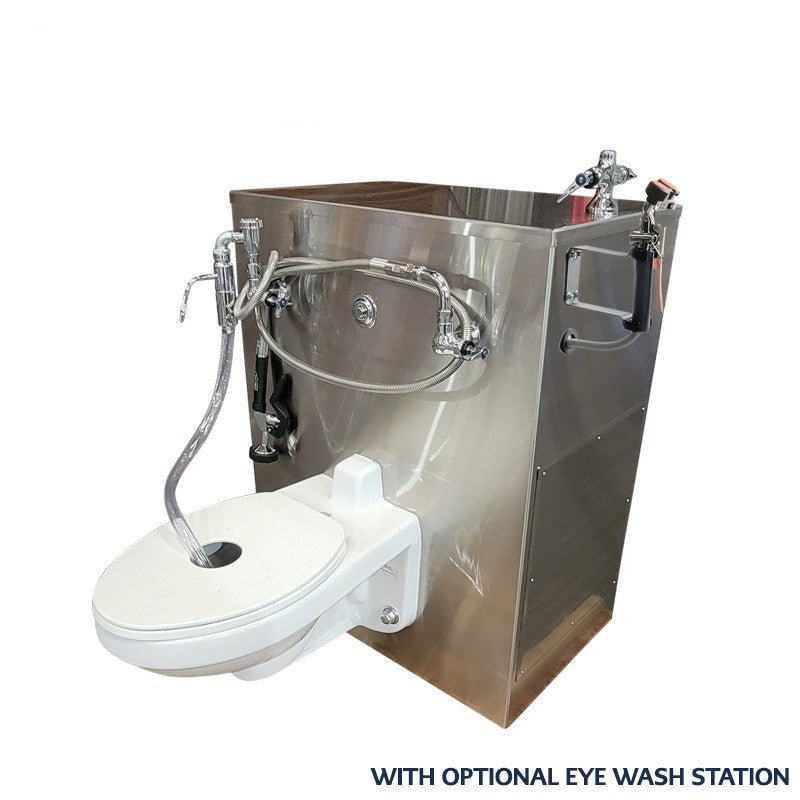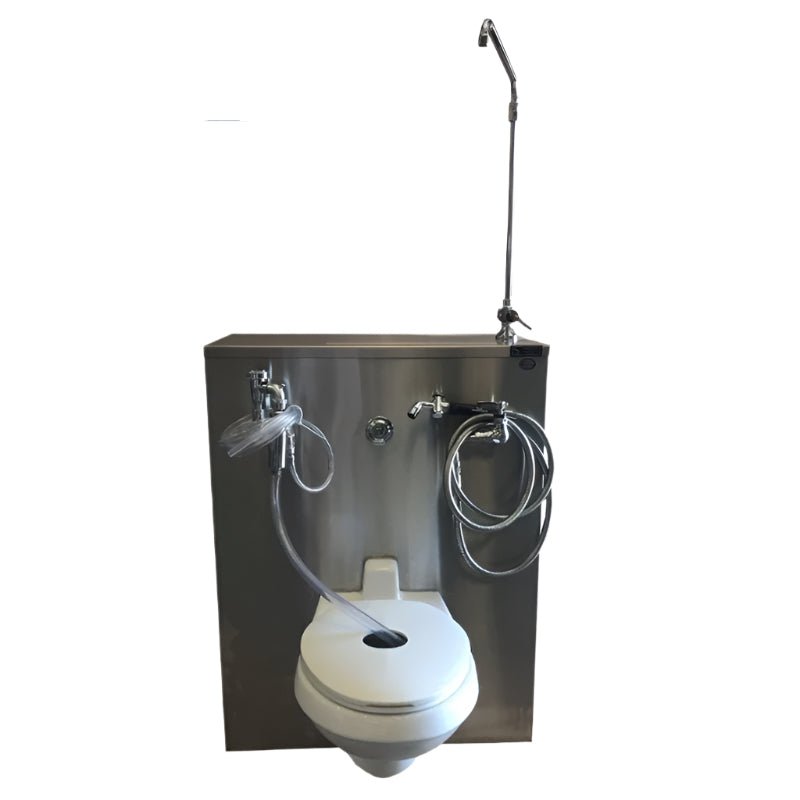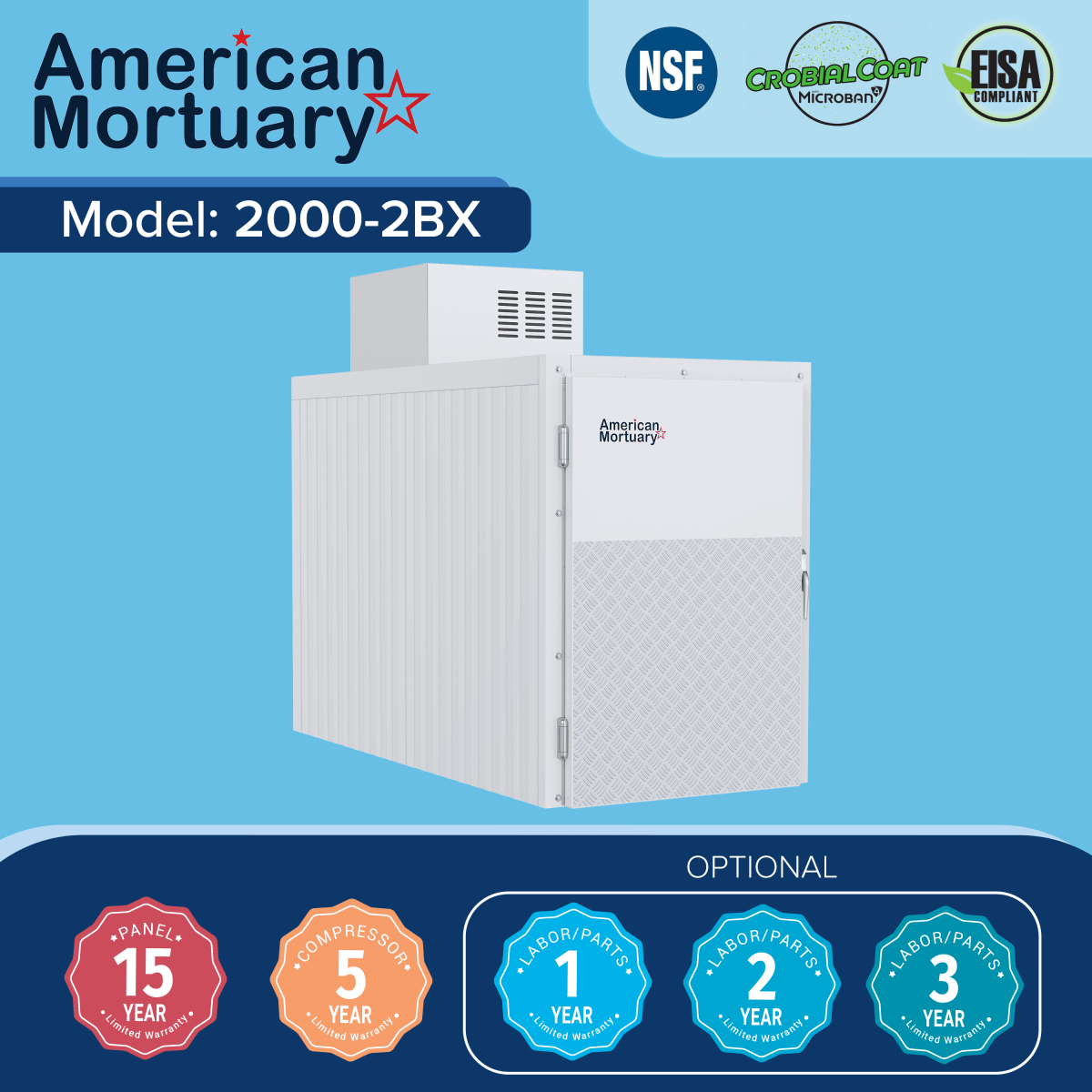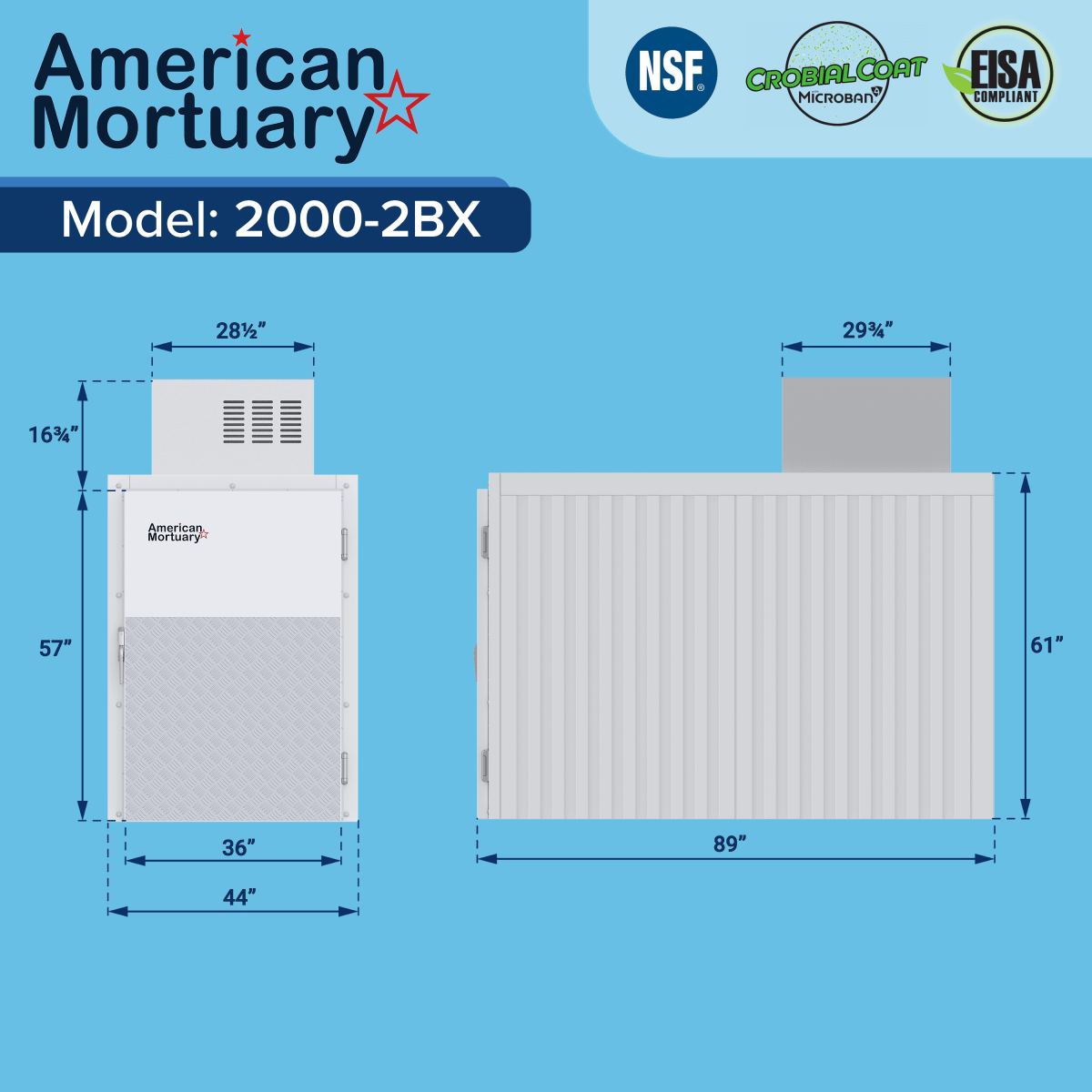Why Adding an Auto Lift in Garage Changes Everything
An auto lift in garage transforms your workspace from cramped quarters into a professional-grade service bay. Whether you're storing a second vehicle, performing routine maintenance, or showcasing your prized collection, the right lift doubles your parking capacity and puts an end to back-breaking work under low cars.
Key Auto Lift Options for Home Garages:
- 4-Post Lifts: Best for storage and oil changes (8,000-9,000 lb capacity)
- 2-Post Lifts: Ideal for suspension work and repairs (requires 10+ ft ceiling)
- Scissor/Mid-Rise: Perfect for low ceilings and tire service
- Portable Options: QuickJack and MaxJax for ultimate flexibility
Essential Requirements:
- Minimum 10 ft ceiling height for standard lifts
- 4-inch concrete slab (reinforced pads recommended)
- 110V power supply for most residential models
- ALI certification for safety and insurance compliance
The research shows that a 4-post car lift can double your parking space without major renovations, while portable lifts like QuickJack offer 3,500-8,000 lb capacity with setup in under 15 minutes.
We're American Mortuary Coolers, and while our expertise centers on mortuary equipment, we've spent years working with hydraulic lifting systems and understand the critical safety and durability factors that make an auto lift in garage installation successful.
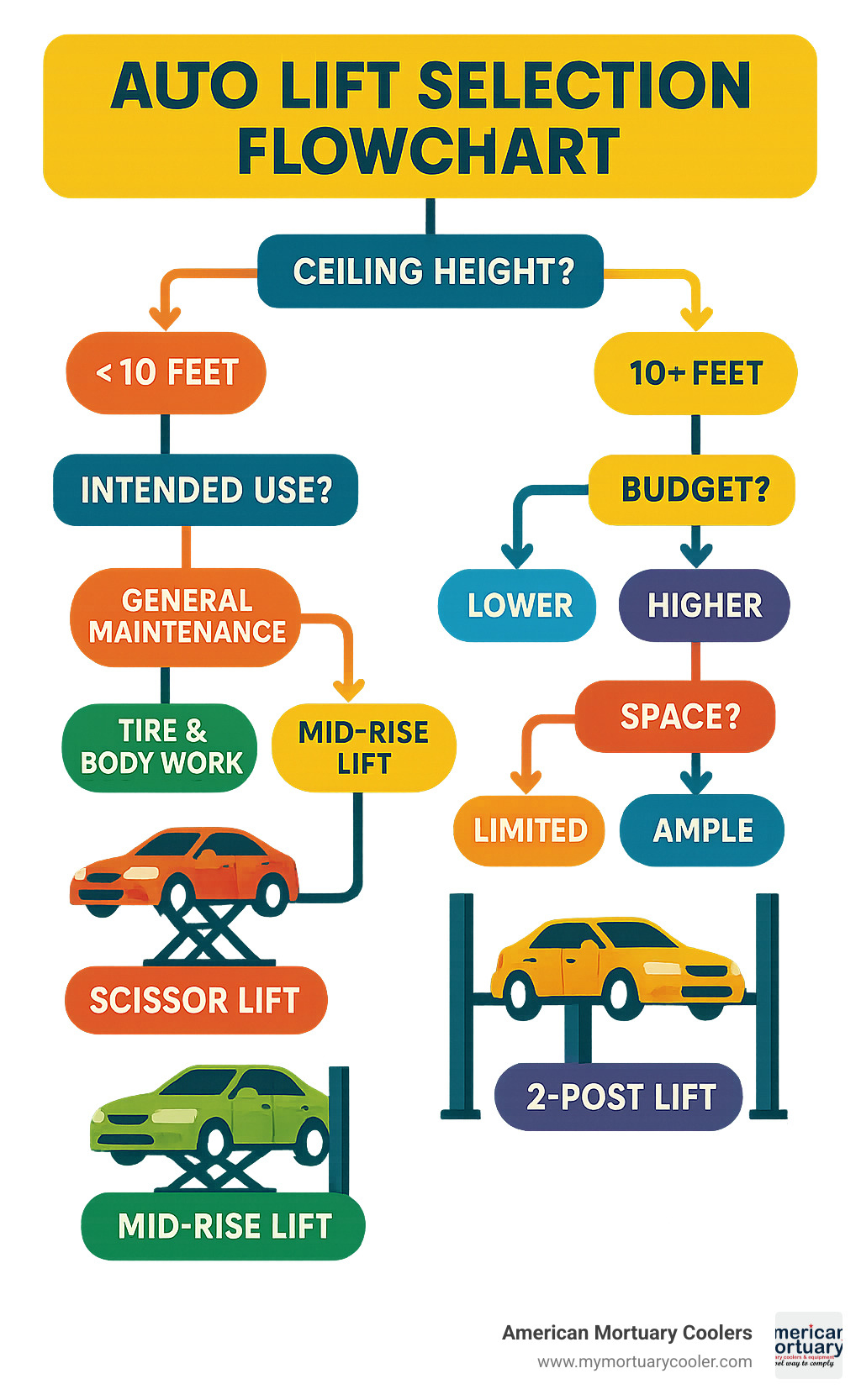
Basic auto lift in garage vocab:
Auto Lift Basics: Types, Uses & Why They Matter
When you're lying on your back under a car, oil dripping on your face, wondering why you didn't just take it to a shop - that's exactly when most folks start seriously considering an auto lift in garage setup. The good news is there's a lift type for practically every situation, budget, and garage configuration.
Think of auto lifts like tools in a toolbox - each one excels at different jobs. 2-post lifts are your heavy-duty workhorses for serious mechanical work, while 4-post lifts shine for storage and basic maintenance. Scissor lifts handle mid-rise tasks perfectly, portable lifts give you flexibility to move around, and single-post lifts maximize space when every square foot counts.
Auto Lift in Garage: Main Types Explained
2-post lifts come in two flavors. Symmetrical 2-post lifts have arms that extend equally from both posts - perfect when your vehicle's lift points are centered. Asymmetrical 2-post lifts feature shorter front arms, which gives you much better door clearance when working on the car.
4-post lifts are the steady, reliable choice for most homeowners. Standard 4-post lifts use drive-on ramps that make loading simple - just drive up and you're done. 4-post stacker lifts take this concept vertical, letting you stack vehicles to maximize space usage.
Scissor and mid-rise lifts work beautifully in garages with lower ceilings. These typically raise your vehicle 24 to 48 inches off the ground - enough for comfortable tire changes and basic undercarriage work without requiring cathedral ceilings.
Portable hydraulic lifts are the flexible athletes of the lift world. QuickJack systems handle anywhere from 3,500 to 8,000 pounds and set up in minutes. The MaxJax M7K offers 7,000-pound capacity with a surprisingly small footprint.
Here's what you can expect for lifting capacity: portable units handle 3,500 to 8,000 pounds, scissor lifts manage 6,000 to 9,000 pounds, 2-post lifts typically range from 9,000 to 15,000 pounds, 4-post lifts cover 8,000 to 14,000 pounds, and single-post stackers usually top out around 6,000 to 8,000 pounds.
Core Reasons to Add an Auto Lift in Garage
Installing an auto lift in garage isn't just about having cool equipment - though that's definitely a bonus. The practical benefits quickly justify the investment.
Doubling your parking capacity might be the most obvious advantage. A 4-post lift essentially gives you a two-story garage without major construction. You can store that restoration project on top while parking your daily driver underneath.
Superior undercarriage access changes everything about maintenance work. No more wrestling with jack stands, crawling on cold concrete, or trying to squeeze into impossible positions. Standing upright while changing oil or inspecting brakes isn't just more comfortable - it's significantly safer.
Seasonal storage solutions free up valuable floor space year-round. Motorcycles, ATVs, and seasonal vehicles can live overhead when you're not using them, leaving room for other activities in your garage.
Improved hobby projects become possible when you have proper access and workspace. Whether you're restoring classics, performing routine maintenance, or tackling bigger repairs, a lift transforms your garage into a legitimate workspace.
Increased property value is the cherry on top. A properly installed garage lift appeals to automotive enthusiasts and adds genuine functional value to your home.
Will a Car Lift Fit Your Garage? Measurements & Requirements
The excitement of getting an auto lift in garage can quickly turn to disappointment if you find your space won't accommodate the lift you want. Most garages can work with the right planning and sometimes minor modifications.
Before you fall in love with a specific lift model, you need to become best friends with your tape measure. Standard residential garages were built for parking cars, not lifting them. That doesn't mean it's impossible - it just means you need to be smart about your approach.
The most common deal-breakers are ceiling height and concrete thickness. Many homeowners get excited about a 4-post lift only to find their 8-foot ceiling won't cut it. Others find out their 3-inch concrete slab needs reinforcement.
Step-by-Step Measuring Checklist
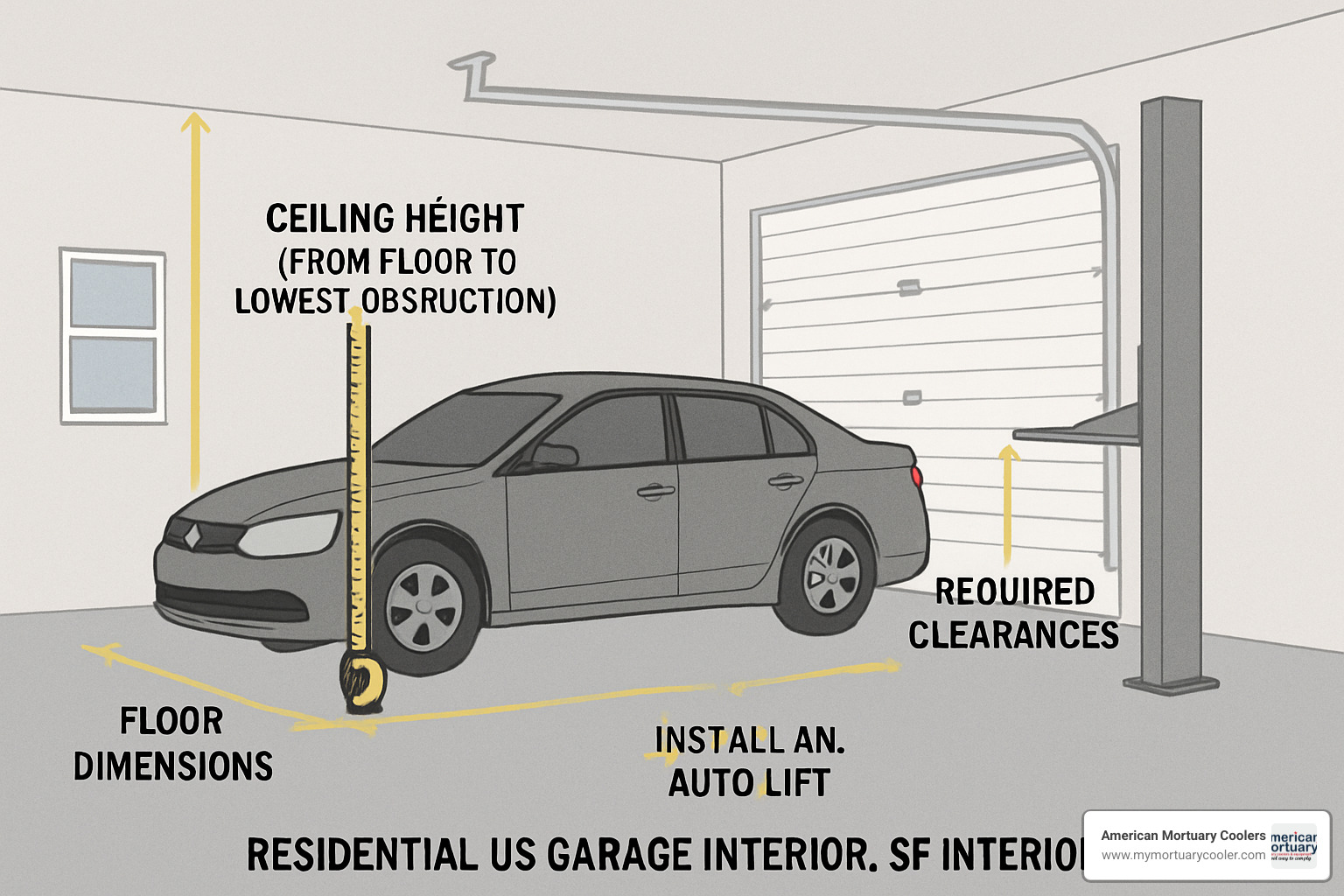
Start with your ceiling height - measure to the lowest point, not the highest. That garage door track, overhead storage rack, or light fixture might be your limiting factor. Most standard lifts need 10-12 feet minimum.
Next, measure your floor space carefully. A typical 4-post lift ranges from 115 to 131 inches wide and 165 to 184 inches long. For 2-post lifts, you'll need 11-12 feet between the posts minimum.
Your vehicle specifications matter more than you might think. Check your owner's manual for exact weight - don't guess. Measure the wheelbase and overall length. Don't forget about height, especially if you have roof racks or spoilers.
Door placement can make or break your project. Measure your garage door height and note where the tracks run. Look for overhead obstructions like HVAC ducts or electrical fixtures.
Finally, locate your nearest 110V outlet and measure the distance to your electrical panel. Most residential lifts run on standard household current, but you'll likely need a dedicated circuit.
Minimum Garage Specs for Safe Installation
Your ceiling needs to be at least 10 feet high for most lifts, though 12-13 feet gives you much better clearance and more lift options. If you're borderline on height, consider a high-lift door conversion.
Your concrete slab needs to be at least 4 inches thick with 3,000 PSI strength. This isn't negotiable for safety reasons. If your slab is thinner, you'll need reinforcement pads - typically 3×3×7 inch thick concrete pads under each post location with proper rebar reinforcement.
Electrical requirements are straightforward for most residential lifts. You'll need a dedicated 20-amp circuit with GFCI protection. Most home lifts run on standard 110V power, though some larger models require 220V.
Don't overlook ventilation considerations. Your hydraulic system needs adequate airflow for cooling, and if you plan to run engines while they're lifted, you'll need proper exhaust ventilation.
For detailed specifications and installation guidelines, the car lift brochure provides comprehensive technical requirements for different lift types.
2-Post vs 4-Post vs Scissor vs Portable: Pros, Cons & Best Fits
Choosing the right auto lift in garage comes down to understanding how each type fits your specific needs. Think of it like choosing the right tool for the job - each lift type has its sweet spot where it really shines.
| Lift Type | Capacity | Footprint | Install Complexity | Cost Range | Mobility | Underbody Access |
|---|---|---|---|---|---|---|
| 2-Post | 9,000-15,000 lbs | Minimal | High | $2,500-$5,000 | Fixed | Excellent |
| 4-Post | 8,000-14,000 lbs | Large | Medium | $2,000-$4,000 | Optional wheels | Good |
| Scissor | 6,000-9,000 lbs | Medium | Medium | $1,500-$3,000 | Limited | Limited |
| Portable | 3,500-8,000 lbs | Minimal | Low | $1,500-$2,500 | Excellent | Good |
2-Post vs 4-Post for Home Use
If you're serious about service work, a 2-post lift is hard to beat. You can pull wheels off easily, get to suspension components without obstacles, and have complete access to the underside of your vehicle. The trade-off? You need to be more careful about positioning your car correctly on the lift arms.
2-post lifts require higher ceilings - we're talking 12 feet or more for comfortable use. The installation is also more involved since you're anchoring substantial posts to your concrete. But once it's in, you have professional-level access that makes complex repairs much easier.
On the flip side, 4-post lifts are the workhorses of vehicle storage. Drive your car up the ramps, hit the switch, and you're done. No precise positioning required, no worrying about lift points. They're incredibly stable and many come with mobility kits that let you roll the entire lift around your garage when needed.
The downside of 4-post systems is their larger footprint and limited access for wheel service. You'll often need a separate bridge jack to lift the wheels off the runways for tire changes or brake work.
Scissor & Portable Options for Tight Spaces
When your garage has an 8 or 9-foot ceiling, mid-rise scissor lifts become your best friend. They lift your vehicle 24 to 48 inches - enough to work comfortably underneath without requiring the ceiling height of full-rise lifts.
For ultimate flexibility, portable options have come a long way. The QuickJack systems range from 3,500 to 8,000 pound capacity and set up in minutes. When you're done, they store vertically on wall hangers, giving you your garage floor back completely.
The MaxJax M7K takes portability to another level with a removable 2-post design. It anchors securely when in use but can be completely relocated if needed.
For current models and detailed specifications, check out QuickJack portable lift details to see what might work best for your specific situation.
The Smart Buyer's Guide: Safety, Certification, Costs & Top Brands
When you're shopping for an auto lift in garage, it's easy to get caught up in features and prices. But you're literally trusting this equipment with your life when you work underneath thousands of pounds of vehicle. That's why safety certifications and quality construction should be your starting point, not an afterthought.
ALI certification might cost more than those tempting knockoff lifts, but it's the gold standard for automotive lifting equipment. The Automotive Lift Institute puts lifts through rigorous testing that cheap imports simply can't pass.
ETL listing provides another layer of safety assurance, ensuring electrical components meet strict standards. When you're dealing with hydraulic systems powered by electricity, this certification isn't optional - it's essential.
The hydraulic system forms the heart of most lifts, and quality here makes all the difference. Look for systems with overload valves that prevent lifting beyond capacity, and cable locks that engage automatically if hydraulic pressure fails.
Safety First: Features & Daily Checks
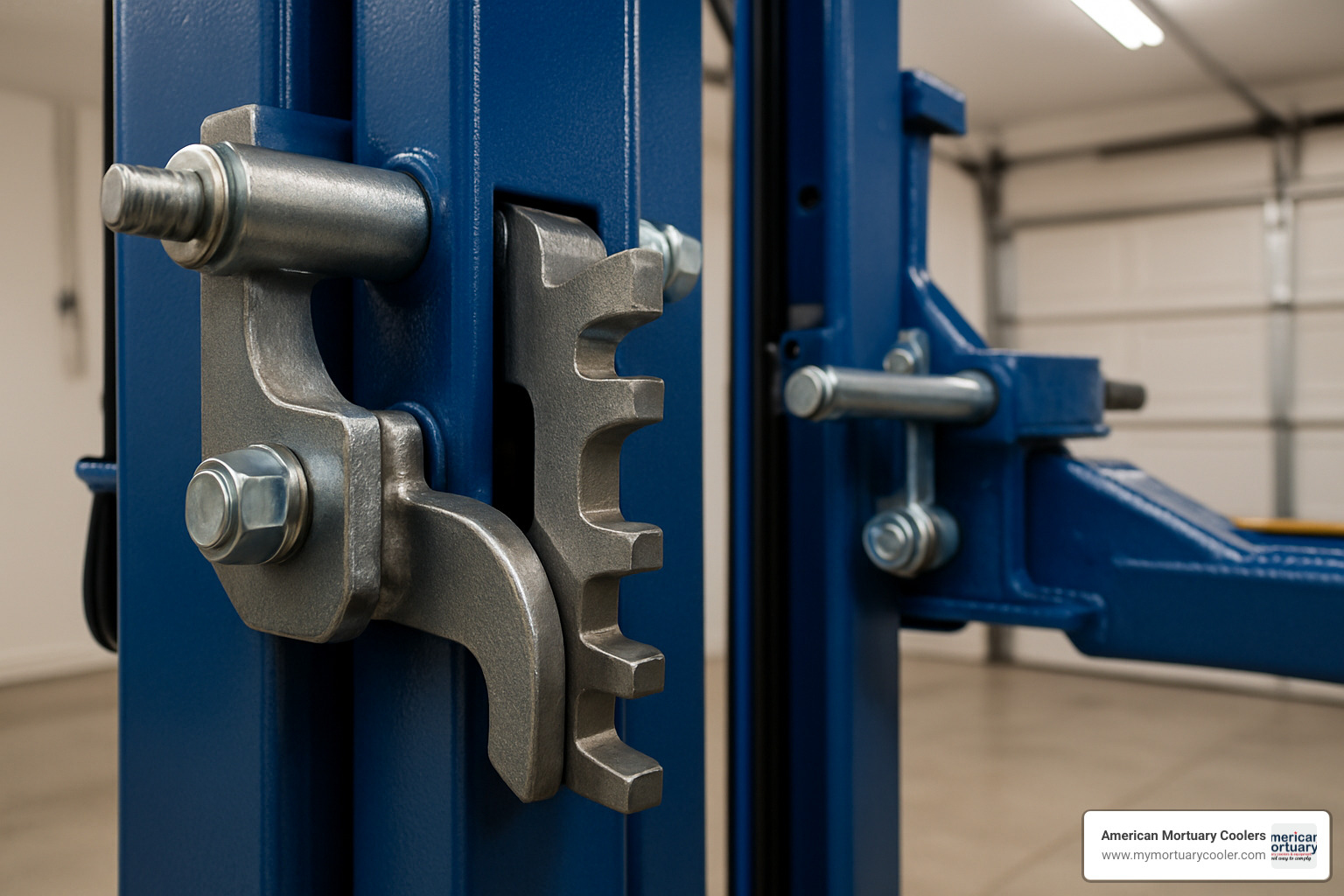
Mechanical locks are your ultimate safety net. These spring-loaded pawls automatically engage as the lift rises, creating multiple catch points. If your hydraulics fail completely, these locks are what keep you safe.
Overload valves in the hydraulic system prevent you from attempting to lift more weight than the system can handle safely. These pressure relief valves automatically open if you exceed capacity.
Your daily safety routine should become second nature. Start with cable inspection - look for fraying, kinks, or any signs of wear. Check that safety locks engage properly by lifting the vehicle a few inches and gently testing the locks. Verify your hydraulic fluid levels and watch for any leaks around fittings.
For more insights into maintaining hydraulic systems, check out our detailed guide on hydraulic pump essentials.
What You'll Spend: Purchase, Shipping & Installation
Unit prices start around $1,500 for basic portable lifts and can climb past $8,000 for premium 2-post systems. Most homeowners find their sweet spot between $2,000-$4,000 for a quality 4-post lift.
Freight costs add another $300-$900 depending on your location and the lift's size. Professional installation runs $500-$1,500, and honestly, it's often worth every penny.
Don't forget about your foundation. Most residential garages need concrete reinforcement or new pads under the lift posts. Budget $300-$1,000 for this work, and allow 28 days for concrete to cure before installation.
Best-Rated Home-Garage Lift Models
The Wildfire WF9000XLT stands out with its comprehensive 5-year warranty covering posts, hydraulic rams, motors, and parts. Users consistently praise both the engineering quality and customer service.
BendPak's HD-9 series earns its reputation as the premium choice. Yes, they're expensive, but the build quality justifies the cost.
The Advantage DX-9000 offers excellent value for residential use. It provides the safety features and capacity most homeowners need without the premium price tag.
For portable options, the MaxJax M7K delivers impressive 7,000-pound capacity in a system you can set up in 15 minutes. The QuickJack 7000TL rounds out the portable category with automatic locking bars.
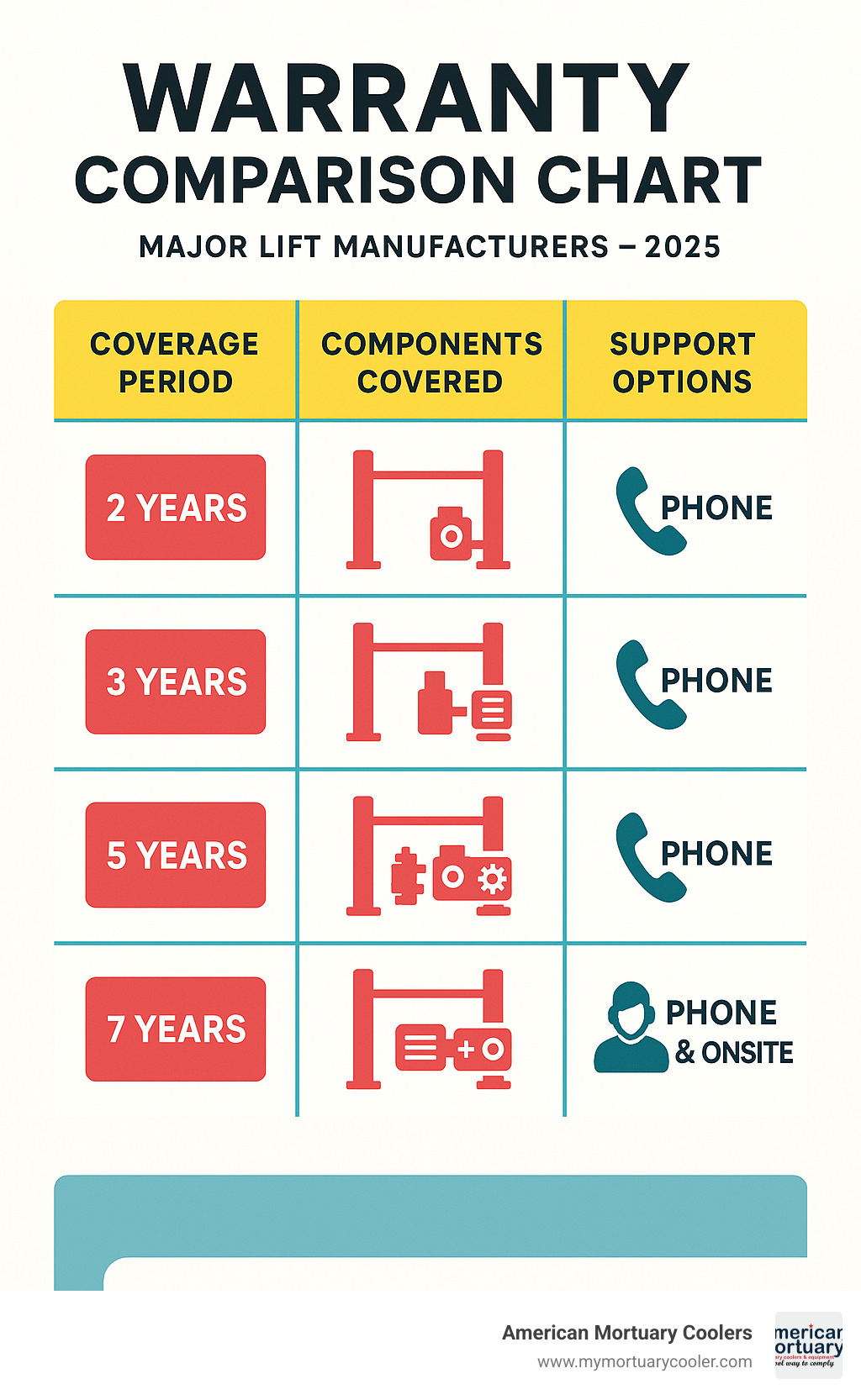
Installing & Maintaining an Auto Lift in Garage
Getting your auto lift in garage properly installed marks the exciting transition from planning to actually using your new equipment. The installation process might seem daunting, but most lifts arrive about 80% pre-assembled, which simplifies things considerably.
DIY vs Professional Installation
Many enthusiasts successfully install their own lifts and save $500-$1,500 in labor costs. The satisfaction of completing the project yourself, plus learning your lift's systems inside and out, appeals to many DIY-minded folks.
However, DIY installation requires some serious equipment. You'll need an engine hoist or tractor to handle heavy components, a quality torque wrench for proper bolt specifications, and basic electrical knowledge for power connections. Most importantly, you'll need 2-3 helpers for safety during assembly.
Professional installation brings specialized tools, experience with tricky situations, and warranty coverage on the installation work. Licensed installers typically complete the job in one day versus a weekend DIY project.
Essential Accessories & Upgrades
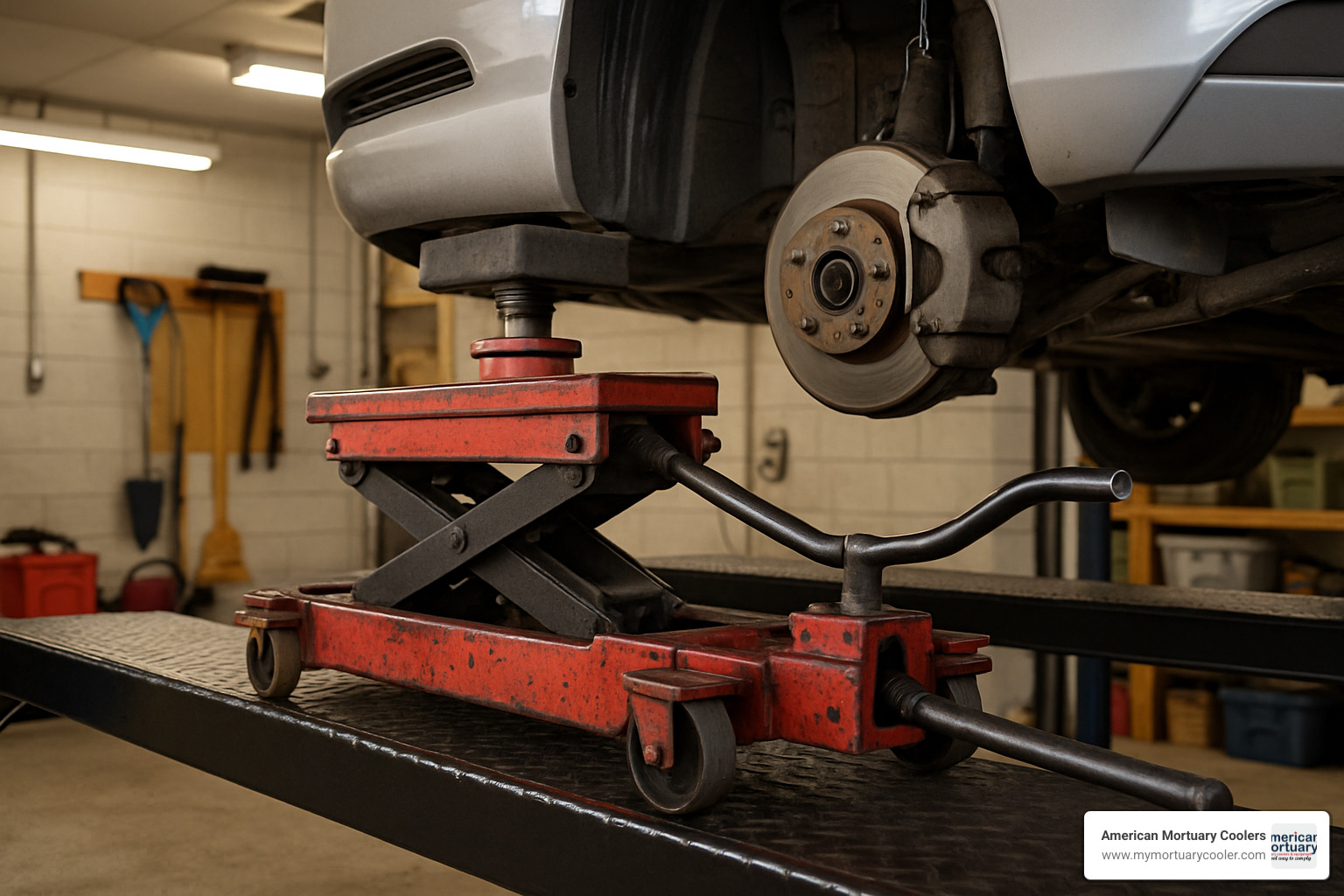
A rolling bridge jack becomes essential if you choose a 4-post lift and plan to remove wheels. This specialized jack rolls between the runways and provides a stable lifting point for individual wheels.
Caster kits add tremendous versatility to 4-post lifts by making them mobile. You can reposition your lift for different garage configurations or roll it aside when you need the space for other projects.
Extended aluminum ramps solve clearance problems for low-sitting vehicles. Standard 36-inch ramps cause scraping issues with many sports cars and lowered vehicles, but 60-inch ramps provide a gentler approach angle.
LED lighting systems mounted under the lift dramatically improve visibility and safety when working beneath vehicles. Good lighting prevents accidents and makes detailed work much easier.
For additional insights into lifting equipment, you might find our guide on electric scissor lift options helpful, as many of the hydraulic principles apply across different types of lifting equipment.
At American Mortuary Coolers, we understand the importance of reliable hydraulic systems from our work with mortuary equipment. The same attention to safety and durability that goes into our mortuary coolers applies to any hydraulic lifting system.
Frequently Asked Questions About Auto Lifts in Home Garages
When you're considering an auto lift in garage installation, you probably have the same questions we hear all the time. Let's tackle the big three that keep most homeowners up at night.
What ceiling height do I need for a standard auto lift in garage?
10 feet is the absolute minimum, but you'll be happier with 12-13 feet. With a 10-foot ceiling, you're looking at about 4 feet of clearance under your lifted vehicle. That's enough to crawl around, but you'll still be doing some uncomfortable crouching. Bump that up to 12 feet, and suddenly you're working in comfort with full standing room.
Scissor lifts and portable options are your best friends if you're stuck with lower ceilings. They're designed specifically for garages that weren't built with car lifts in mind. Meanwhile, 2-post lifts really want that full 12+ feet to operate safely and give you the access you're paying for.
Can I install a lift on a 4-inch slab without extra reinforcement?
Technically, yes - a 4-inch slab meets the minimum requirements. But here's what we've learned from years of working with heavy equipment: reinforcement is your insurance policy.
The smart move is pouring 3×3×7 inch concrete pads under each lift post. This creates a 7-inch thick foundation in the critical areas where all that weight gets concentrated.
Your concrete should be at least 3,000 PSI strength, and let it cure for the full 28 days before installation. I know it's tempting to rush, but concrete gets stronger with time - and you want all the strength you can get.
How often should I service the hydraulic system on my garage lift?
Hydraulic systems are like any other piece of equipment - a little attention goes a long way. We recommend monthly visual checks and annual professional service.
Your monthly routine should include checking for leaks, verifying fluid levels, and testing those safety locks. It takes maybe 10 minutes, but catching problems early saves major headaches later.
Annual service is non-negotiable - hydraulic fluid replacement, seal inspection, and pressure testing. Most manufacturers want this done every 12-18 months depending on how much you use the lift.
At American Mortuary Coolers, we work with hydraulic systems every day in our mortuary equipment. The principles are the same whether you're lifting a car or operating a mortuary cooler - respect the system, maintain it properly, and it'll serve you reliably for years.
Conclusion
Your journey toward installing an auto lift in garage doesn't have to be overwhelming. Whether you're dreaming of doubling your parking space with a sturdy 4-post lift, tackling serious repairs with a 2-post system, or keeping things flexible with a portable QuickJack, the right lift turns your cramped garage into the workspace you've always wanted.
Here at American Mortuary Coolers, we know a thing or two about hydraulic lifting systems that need to work flawlessly day after day. While we're based in Tennessee and focus on crafting custom mortuary equipment, our experience with heavy-duty lifting solutions across the contiguous 48 states has taught us what separates reliable equipment from costly headaches.
The change is real: imagine walking into your garage and seeing your classic car stored safely overhead while your daily driver sits comfortably below. No more crawling on cold concrete for oil changes. No more struggling with jack stands that never seem quite stable enough.
But here's what matters most - safety always comes first. We've seen too many people tempted by bargain lifts that cut corners on the features that keep you safe. ALI certification isn't just a fancy sticker; it's your guarantee that someone cared enough to test the equipment properly.
Your garage becomes more valuable when you choose the right lift system. You're creating a space that adapts to whatever life throws at you - whether that's winter motorcycle storage, classic car restoration projects, or simply having a comfortable place to work on the family vehicles.
The hydraulic systems we work with in our mortuary equipment face demanding conditions and need to perform flawlessly. That same attention to reliability applies to garage lifts. For deeper insights into hydraulic system selection and maintenance, check out our guide on hydraulic lift pumps.
Your garage lift is a long-term partner, not just another tool. Choose equipment that matches your needs, invest in proper installation, and stay on top of maintenance. Do it right, and you'll wonder how you ever managed without it.









